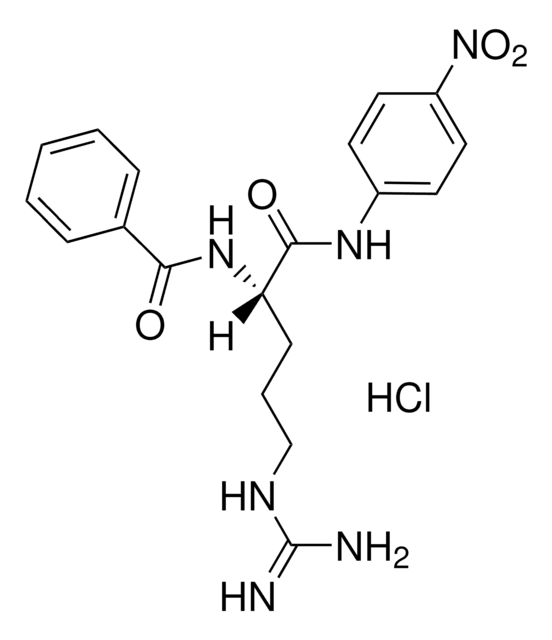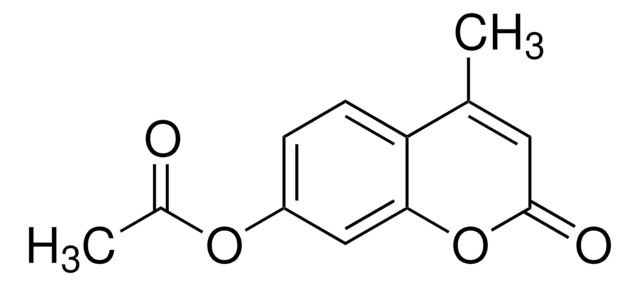N8010
4-Nitrophenyl 4-guanidinobenzoate hydrochloride
protease substrate, ≥95.0% (TLC), powder
Synonym(s):
4-Guanidinobenzoic acid 4-nitrophenylester hydrochloride, NPGB, pNPGB
About This Item
Recommended Products
product name
4-Nitrophenyl 4-guanidinobenzoate hydrochloride, protease inhibitor and substrate
Quality Level
Assay
≥95.0% (TLC)
form
powder
solubility
formic acid: soluble 49.00-51.00 mg/mL
storage temp.
−20°C
SMILES string
Cl[H].NC(=N)Nc1ccc(cc1)C(=O)Oc2ccc(cc2)[N+]([O-])=O
InChI
1S/C14H12N4O4.ClH/c15-14(16)17-10-3-1-9(2-4-10)13(19)22-12-7-5-11(6-8-12)18(20)21;/h1-8H,(H4,15,16,17);1H
InChI key
PKSBDZOBYIKNGY-UHFFFAOYSA-N
Looking for similar products? Visit Product Comparison Guide
General description
Application
- as a substrate for trypsin for active site titration experiments
- for pre-treating of mosquito eggs in the interplasmid transposition assay
- as a component of isotonic buffer to moisten filter paper for mosquito embryo collection
Biochem/physiol Actions
Signal Word
Danger
Hazard Statements
Precautionary Statements
Hazard Classifications
Eye Dam. 1
Storage Class Code
11 - Combustible Solids
WGK
WGK 3
Flash Point(F)
Not applicable
Flash Point(C)
Not applicable
Personal Protective Equipment
Certificates of Analysis (COA)
Search for Certificates of Analysis (COA) by entering the products Lot/Batch Number. Lot and Batch Numbers can be found on a product’s label following the words ‘Lot’ or ‘Batch’.
Already Own This Product?
Find documentation for the products that you have recently purchased in the Document Library.
Our team of scientists has experience in all areas of research including Life Science, Material Science, Chemical Synthesis, Chromatography, Analytical and many others.
Contact Technical Service









